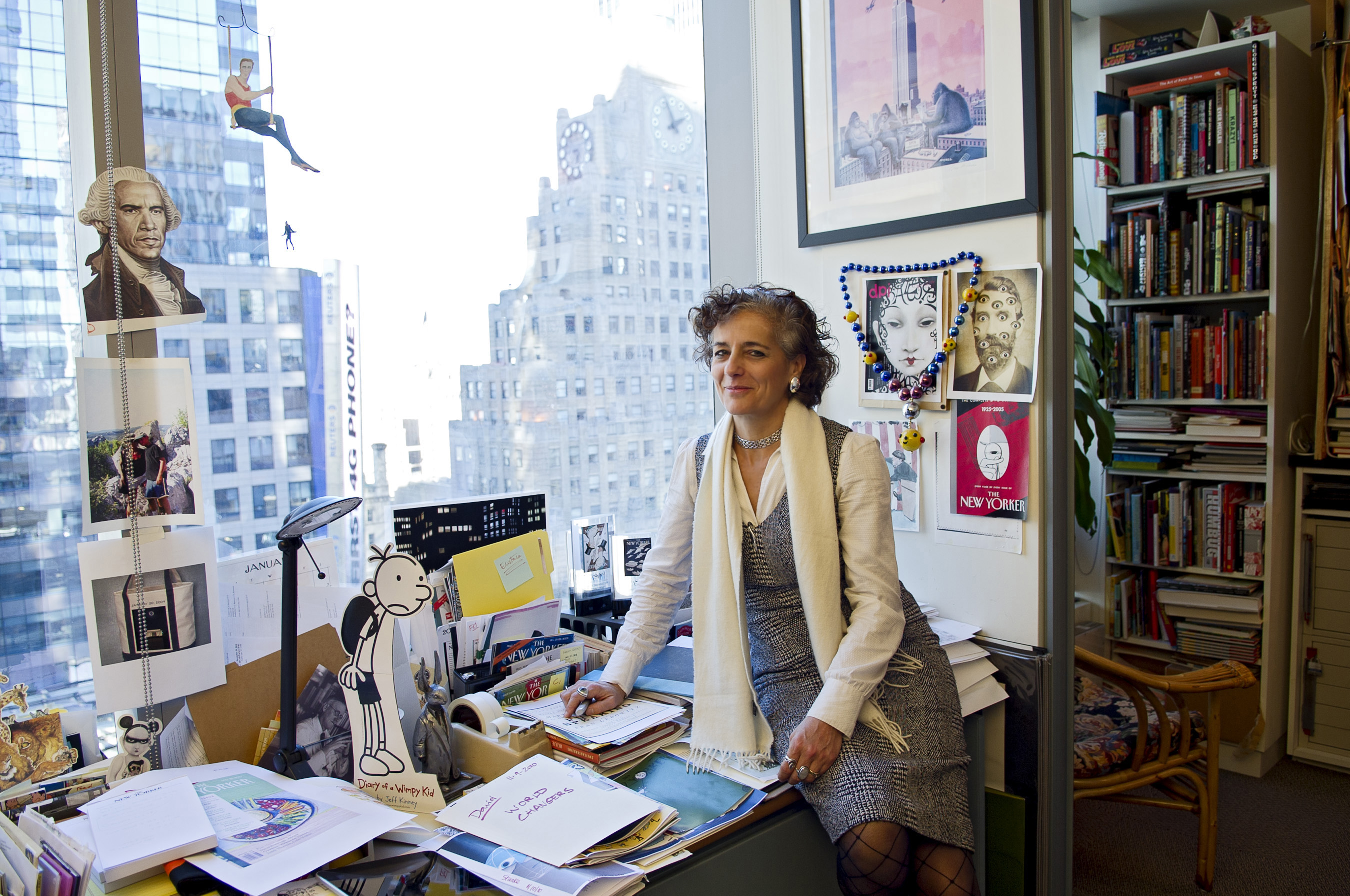Art Spiegelman on comic-book stardom and the responsibility of today’s artists

Françoise Mouly is the art editor for The New Yorker. (Photo courtesy of Sarah Shatz)
Cartoonist Art Spiegelman has always had a talent for merging the political and the personal.
His Pulitzer Prize-winning graphic novel “Maus: A Survivor’s Tale” wove his childhood memories with war-torn Germany in its charged retelling of his father’s experience as a Holocaust survivor. Spiegelman and his wife Françoise Mouly, the art editor for The New Yorker, spoke about the responsibilities of artists in the current political moment at Bovard Auditorium Thursday.
The Daily Trojan caught up with Spiegelman prior to the event to talk comics, culture and what creativity may mean for posterity.
“I was lucky enough to be born at a moment when it was possible to make comics as a medium of self expression rather than just as part of an industry,” Spiegelman said over the phone from his New York studio on Tuesday. “I just thought of [drawing] when I was 11 years old. When Samuel Beckett was asked why he became a writer he answered, ‘Not suited for anything else.’ I guess that hit at 11 and never quite changed.”
From there, Spiegelman began publishing his own purple-ink Mad-esque comic, “Blasé,” which launched him into the underground comix scene.
“I first went to the newly launched East Village Other because the cartoons they had were pretty awful, and I thought I could do something slightly better or just as awful,” he said. “The editor Walter Boward nodded and said, ‘Could you give us more stuff with sex and drugs?’”
Luckily, Spiegelman’s career at the East Village Other swerved swiftly around his parents’ wish that he become a dentist. “[My father] explained that ‘You know in Auschwitz even dentists were doctors?’ It was an attempt to get me in a better position to survive,” he said.
Spiegelman also shared his gritty trail to success in the art world with Mouly.
Before she became The New Yorker’s art editor, Mouly worked a number of odd jobs in New York after moving from Paris, where she was studying architecture at the prestigious École des Beaux-Arts. Their romance began over dinner when Mouly forgot her wallet and insisted on paying Spiegelman back. Soon, the pair was spending Thanksgiving together at a Chinese restaurant.
“At some point I asked her, ‘So what are your plans for Thanksgiving?’ and she said, ‘Thanksgiving? What is that?’ To which I said, ‘It’s a night when people go out to Chinese restaurants, could I take you?’”
Their romance soon morphed into mutual inspiration and they began co-editing the comic magazine Raw, despite Spiegelman’s vow to never edit again after his stressful stint editing Arcade, the underground comix magazine he founded with Bill Griffith.
Though much of Spiegelman’s work since “Maus” can be said to more closely resemble his underground comix days, the cartoonist said he cannot help but return to “Maus” and what it represents in light of our current political moment.
“I couldn’t have dreamed of how overtly authoritarian and fascist the future can look some days and as a result it has made me look back on my own work differently,” Spiegelman said. “When I made ‘Maus’ it wasn’t about wanting to make the world better; it wasn’t about anything but wanting to tell a story.”
On the Tuesday of midterm elections, Spiegelman speculated what sort of drinks they would serve after his talk at USC: “We should ask to serve champagne or perhaps cyanide which is most likely from the vantage point in this current moment, or perhaps just flat beer.”
Wearing his politics on his sleeve, Spiegelman is also the hand behind some of The New Yorker’s most controversial covers, including the Feb. 15, 1992 issue, which features a Hasidic man kissing a black woman, and a 1998 issue, depicting a construction worker breastfeeding her baby while seated on a scaffolding.
Acutely aware of the power comics hold to bring about messages of social change, Spiegelman is also conscious to the art form’s misuses: “Comics are thriving and [comics] have proved themselves to be good at lots of things. One thing being making art I suppose, but more obvious in more recent decades, it’s used to amuse and entertain but also to spread the most vile propaganda possible.”
When asked about whether the responsibility of artists presently carries more weight, Spiegelman paused.
“I don’t think any artist should do anything,” he finally said. “Because some people are better at adjusting colors … Others who can [participate] certainly should be.”
Yet, Spiegelman remains hopeful about the future of young artists and the roles they will someday play in determining and interpreting national moments.
“Every artwork is a response to other works of art, as well as a way of reporting what it is you feel,” he said. “[Young artists should] stick with it. It’s not something that happens in a day.”
